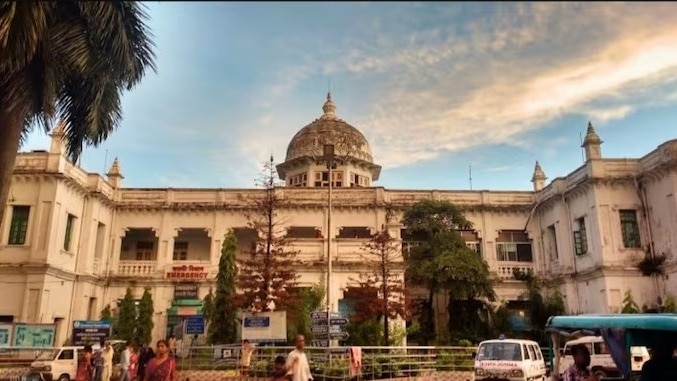Kolkata is continuously burning after the rape-murder of a trainee doctor in RG Kar Hospital. People are angry and are taking to the streets demanding justice. A long period of dharnas, demonstrations and even violent demonstrations is continuing. Many movements like strikes, work stoppages and non-cooperation are also going on continuously. The CBI investigation is going on and parallel to this, politics is also taking long strides. As fast as the allegations are being made, counter-allegations are also being made with the same speed. What has remained suppressed amidst all this is the scream of the victim, the hope for justice, the demand for punishment to the real culprit and the promise that now there will be no more ‘Abhaya’.
…but West Bengal knows its history, for that this Deja vu It is like that. Because 42 years ago too, this eastern state of the country has heard the scream of a victim amidst torrential rain. Since then, the rainy season has come and gone many times, but the stain of inhumanity on the reputation and the regret of not getting justice does not get washed away. If a journalist Arvind Bhattacharya had not brought to light the painful and dreadful incident that happened in the heavy rain that night in June 1982, then perhaps the scream of that victim would never have been heard.
What happened that night in June 1982
The month of June in Cooch Behar usually sees torrential rains. The year was 1982, Jyoti Basu’s government had come to power in West Bengal and the CPI(M) was in a dominant position in the state. At this time, Cooch Behar was known as a small town where political and social activities were limited.
A young woman from Balurghat in North Bengal had come to Cooch Behar for a government job. She was employed as a staff nurse in Maharaja Jitendra Narayan Hospital. Here she lived with her sister and brother-in-law in a small rented house located near the old post office. This locality of the city was known by the name of that post office. Like every day, she returned from work in the evening that day. That day it was raining heavily in North Bengal and the entire city was flooded with water.
It rained all day, through the night and continued the next day. The city’s streets were flooded, disrupting transport and normal life. Early in the morning, the nurse’s neighbours found her naked, half-dead and unable to speak. The state of her body clearly indicated that she had been raped. Her throat was slit and her private parts were burnt. Acid had been poured into her mouth and her face bore signs of acid burns. She was in such a state that she would not be able to identify her perpetrators even if she saw them. Moreover, acid had been used to remove the marks of rape from her body. That night, her screams were drowned out by the sound of the rain falling on the tin roof.
Locals brought her on a rickshaw to Maharaja Jitendra Narayan Hospital, a kilometre away, where she worked. She was admitted there, but died a few hours later. The incident brought the city to a standstill despite the rain and people were outraged.
Seeing the anger of the people, action was taken in the case in a hurry. Ten people were arrested, but the process of justice was very slow and unsatisfactory. Three of these accused were sentenced to ten years in jail, but they were released after getting bail from the High Court. The other seven accused were also released. The main accused of this heinous crime were allegedly very influential and close to the ruling government, who influenced the process of justice by using their political power. The use of acid to hide their identity and their power in the courts made justice more complicated.
The police interrogated some of the real culprits, but due to political influence they were also released. At that time, when mobile phones and social media did not exist, Cooch Behar was a small town with not much media activity, but when the story was published in the local ‘Uttar Banga Samachar’, the public became angry and took to the streets.
The city tried to raise the voice of the girl again, but no concrete steps were taken for justice. For the people of Cooch Behar, the incident remained just a sad memory. A few days after the incident, the grieving father of the nurse passed away. Her sister and brother-in-law are still waiting for justice for their sister, forty-two years later.
Cooch Behar has seen eight governments, three chief ministers, and two political parties in these forty-two years. The town has repeatedly faced flooded roads and government neglect. Every June, it rains heavily, and the people of the town still take a deep breath with the memories of that June night and then get back to work. The old post office, which was the identity of the area, is no more and with it the hopes of justice for that June night have also ended.
Source (PTI) (NDTV) (HINDUSTANTIMES)
